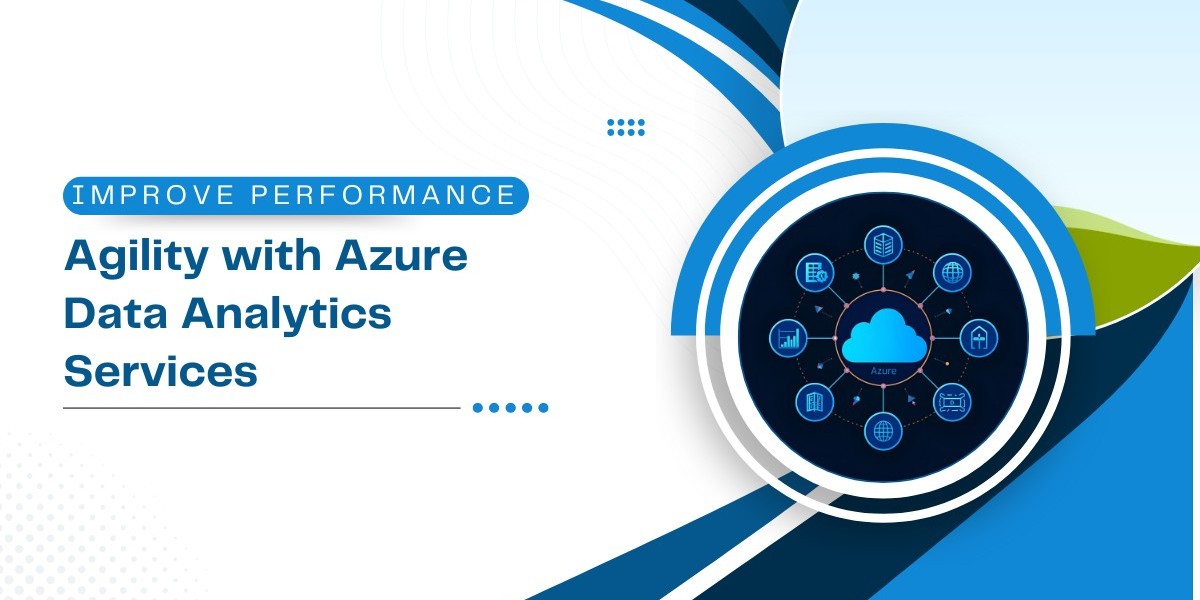As data volumes grow and business needs change faster, organizations need analytics systems that can scale and respond in near real-time. Traditional analytics solutions are often rigid, costly to scale, and slow to adapt. Cloud-based platforms like Azure Data Analytics Services offer a way to improve performance and agility without heavy infrastructure investments.
What is Azure Data Analytics?
Azure Data Analytics refers to a group of cloud-based services from Microsoft designed for data processing, transformation, querying, and analysis. These services cover the full data lifecycle from ingestion to reporting.
Core Azure Data Analytics Services include:
Azure Synapse Analytics – Combines enterprise data warehousing and big data analytics.
Azure Data Factory – A data integration service that enables scheduled and event-driven data pipelines.
Azure Databricks – Provides Apache Spark-based analytics optimized for scale and collaboration.
Azure Stream Analytics – Offers real-time analytics on streaming data from devices and logs.
Azure Analysis Services – A managed OLAP (Online Analytical Processing) engine for building semantic models.
Azure Data Explorer – Specializes in fast, ad hoc querying of telemetry and log data.
Azure Data Lake Storage – Scalable storage for both structured and unstructured data.
Each service addresses a specific layer in the analytics pipeline. Used together, they help build systems that are flexible, responsive, and high-performing.
Why Choose Azure Data Analytics Services
Azure Data Analytics Services provide built-in scalability, performance tuning options, and deep integration with cloud-native and business tools. Below are the primary technical reasons why they improve agility and performance.
1. On-Demand Scalability
Azure services allow compute and storage to scale independently. You can increase resources during high usage and reduce them when idle. For example, compute clusters can auto-scale to meet heavy data processing needs during month-end processing.
2. Pay-As-You-Go Billing
Resources are billed based on usage. There is no need to over-provision infrastructure for occasional high loads. Services like serverless SQL in Synapse reduce costs by charging only when queries run.
3. Fast Data Access and Processing
Services like Azure Synapse and Data Explorer process large datasets in seconds or minutes. Columnar storage, partitioning, and caching reduce query latency and improve throughput.
4. Real-Time Capabilities
Streaming services can handle thousands of events per second with millisecond latency. This is useful in scenarios like fraud detection, monitoring, and IoT analytics.
5. Unified Environment for Batch and Streaming
With both streaming and batch processing in the same platform, data teams can build hybrid pipelines. This allows fast responses while still producing consistent, daily reports.
How Azure Data Analytics Improves Performance
Azure Data Analytics Services offer many performance tuning features. The following practices help reduce query time, improve responsiveness, and handle large data volumes.
1. Partitioning and Indexing
Partitioning breaks large tables or files into manageable chunks. Queries scan only relevant partitions. Indexes, like clustered columnstore indexes in Synapse, speed up aggregations and joins.
2. Columnar and Compressed Storage
Using columnar formats like Parquet or Delta reduces disk usage and I/O by storing only needed columns. Compressed files also speed up data transfer and access.
3. Materialized Views and Aggregates
Pre-computing common aggregations and storing them as materialized views reduces repeated computation. These views can refresh incrementally and serve dashboards in sub-second time.
4. Caching and In-Memory Models
Tabular models in Analysis Services and cached queries in Power BI improve responsiveness. In-memory processing avoids repeated data loads and speeds up complex calculations.
5. Serverless and Dedicated Options
Azure Synapse offers both serverless and dedicated SQL pools. Serverless pools handle ad-hoc queries over data lakes efficiently. Dedicated pools are suited for consistent, heavy workloads.
How Azure Improves Agility
Agility refers to how fast a team can respond to new requirements, change data pipelines, or support new business logic. Azure Data Analytics improves agility in several ways:
1. Modular Services
Each service can be used independently or combined. You can build only what’s needed without being locked into a single platform.
2. Rapid Development with Low Code
Azure Data Factory allows drag-and-drop data pipeline creation. Teams can quickly build, test, and deploy data flows without complex scripting.
3. Integration with Power BI and Excel
Data models in Azure Analysis Services or Synapse can be directly consumed by business users through familiar tools. This reduces the cycle between data availability and insights.
4. Event-Driven Architecture
Services support triggers based on data arrival, schedule, or changes. This supports responsive workflows and reduces manual intervention.
5. CI/CD Support for Data Pipelines
Using Azure DevOps, pipelines and models can be versioned, tested, and deployed like code. This makes it easy to manage change and maintain quality.
Best Practices for Performance and Agility
To get the most from Azure Data Analytics Services , follow these technical best practices:
1. Data Storage
Use Parquet or Delta Lake for efficient read performance.
Organize files into folders by date or region for easier partitioning.
2. Compute Resources
Use autoscaling where supported to manage resource costs.
Pause compute clusters when not in use.
3. Data Modeling
Design semantic models with optimized relationships.
Avoid large numbers of calculated columns in Power BI or Analysis Services.
4. Monitoring
Set up metrics and alerts on query time, pipeline failures, and data freshness.
Analyze query plans and tune long-running operations.
5. Governance and Security
Apply row-level security for different user groups.
Use managed identities for secure service-to-service access.
6. Pipeline Optimization
Combine streaming and batch data for complete insights.
Use delta loads instead of full loads to reduce processing time.
Summary Checklist
Task | Benefit |
Partition tables and files | Faster query response |
Use materialized views | Reduced computation |
Enable caching | Improved dashboard performance |
Monitor queries | Early detection of issues |
Use semantic layers | Consistent business metrics |
Automate deployments | Faster rollouts and changes |
Conclusion
Azure Data Analytics Services help teams build high-performance and agile data systems. With scalable compute, optimized storage, and real-time streaming, these services handle large and fast-changing data workloads effectively.
By applying proven architectural practices—such as partitioning, materialized views, and real-time processing—you can improve both performance and responsiveness. At the same time, modular services and automation improve agility by reducing the time needed to develop and deploy new features.
Azure's approach allows you to support both analysts who need fast dashboards and engineers who need deep control of data workflows. For organizations seeking scalable, flexible, and fast analytics solutions, Azure Data Analytics is a strong foundation.







